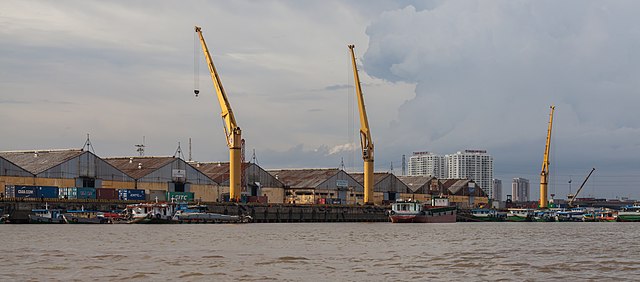One of the big winners in the global economy in 2022 is expected to be Vietnam. The county of 97 million is benefiting from manufacturers moving more factories to its export zones, as well as from an ambitious new regional trade agreement.
As Vietnam recovers from Covid, its exports are expected to surge, according to an analysis of 2021 trade data by Trade Data Monitor, the world’s premier source of trade statistics.
Vietnam’s gross domestic product is expected to rise 5.5% in 2022, up from 2.6% in 2021, according to the World Bank. The exporting manufacturing sector in 2022 will benefit “from steady demand from the United States, the European Union, and China,” the World Bank wrote.
In the first 10 months of 2021, Vietnamese exports lept 17.4% to $269.7 billion from $229.8 billion over the same period in 2020, according to TDM. The top markets were in the U.S., Europe, and China. Exports to the European Union rose 10.6% to $32.2 billion, while shipments to the U.S. rose 23.1% to $76.7 billion according to TDM. By comparison, exports to China increased 17.3% to $44.5 billion.
The bulk of Vietnamese exports were electronics and textiles destined for middle-class consumers. The biggest category was “telephone and parts”, worth $46.6 billion in the first 10 month of 2021, up 10.4% from the same period in 2020; followed by “computers, electrical products and parts”, up 12.1% to $40.9 billion; and textiles, up 5.5% to $26.1 billion.
But Vietnam’s supply chain capacity is growing more sophisticated. Exports of parts for the motor of ships, for example, rose 20.4% to $5.4 billion.
To be sure, the Covid-19 pandemic has hit Vietnam in the last couple years, after the country was largely successful at curtailing the virus in 2020. Vietnam is a rare country whose total trade is twice that of GDP, without the stimulus of oil or mining resources, and now its trade with regional partners is expected to expand further thanks to the new Regional Comprehensive Economic Partnership. The RCEP, which will cut tariffs and ease trade among countries that already trade with each other, includes Vietnam, China, Japan, South Korea, Australia and New Zealand.
“Encouraging free trade is even more important now that the global economy is in a slump and there are signs of countries turning inward,” Japanese Prime Minister Yoshihide Suga told other leaders, according to a Japanese official quoted in the Wall Street Journal.
Vietnam has been the prime beneficiary of China’s changing trade relationships with the U.S. and Europe, rising protectionism in the West, supply chain adjustments, and the boom in economies across Asia. The combination of low labor costs, stable exchange rates and prodigious foreign investment from multinational companies have turned Vietnam into a shining star.
It’s the versatility of the Vietnamese export machine that makes the country’s future especially bright. Vietnam’s factories make everything from Nike and Adidas shoes to Samsung and Apple phones, as well as wide varieties of furniture and electronics. It’s also been boosting its shipments of heavy industrial goods like iron and steel, according to TDM data.
Vietnam’s top supplier of goods was China, at $89.1 billion in the first ten months of 2021. By comparison, it imported $13.9 billion from the EU, and $12.9 billion from the U.S.
One country that is surprisingly making inroads is Australia, which boosted exports to Vietnam 72% to $6.5 billion in the first 10 months of 2021. The bulk of that was essential commodities, such as iron ore, cereals, copper and cotton, according to TDM data.


